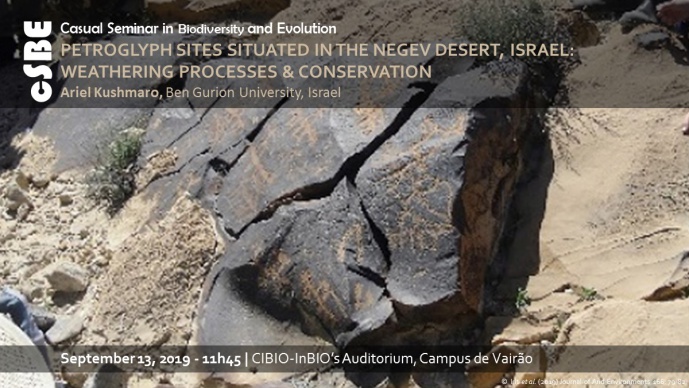PETROGLYPH SITES SITUATED IN THE NEGEV DESERT, ISRAEL: WEATHERING PROCESSES & CONSERVATION

CASUAL SEMINAR IN BIODIVERSITY AND EVOLUTION

Rock art sites containing petroglyphs are found throughout the Negev Desert of southern Israel. Recently, as more sites have been revealed, there has been an increasing awareness of their importance as a cultural heritage resource. However, the rocks on which the petroglyphs were engraved are exposed to natural and anthropogenic weathering processes. In order to characterize the bacterial communities that may play a role in the weathering of rock surfaces and petroglyph panels, we undertook culture-independent (Next Generation Sequencing technologies) and culture-dependent methods to identify the bacterial communities on these rock surfaces. The results reveal that the most common bacterial components at two petroglyphs sites studied were Actinobacteria (33%), Cyanobacteria (30%), Proteobacteria (15%) and Bacteriodetes (7%). Further study and isolation revealed several Cyanobacteria strains related to the Oscillatoriales and Synecococcales orders. This study provides na important first step in understanding the bacterial community structure that may be associated with the weathering of petroglyphs in this region
Professor Ariel Kushmaro is a microbiologist holding a John A. Ungar Chair in Biotechnology in the Avram and Stella Goldstein-Goren Department of Biotechnology Engineering, and a member of the Ilse Katz Institute for Meso and Nanoscale Science and Technology as well as of the National Institute for Biotechnology in the Negev, at Ben Gurion University. His research interests span from the biology of industrial wastewater and biodegradation of pollutants to molecular microbial ecology and symbiosis, in both marine and terrestrial environments, including, but not limited to, the role of microorganisms in rock biodeterioration processes.
[Host: Joana Marques, Predicting and Managing Ecological Change]
Image credits: Irit et al. (2019) Journal of Arid Environments 166: 79-82